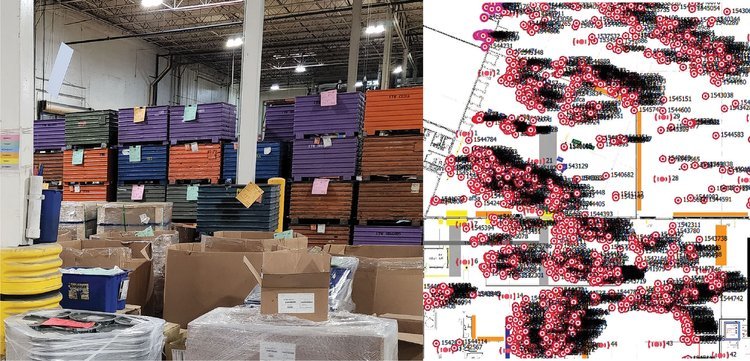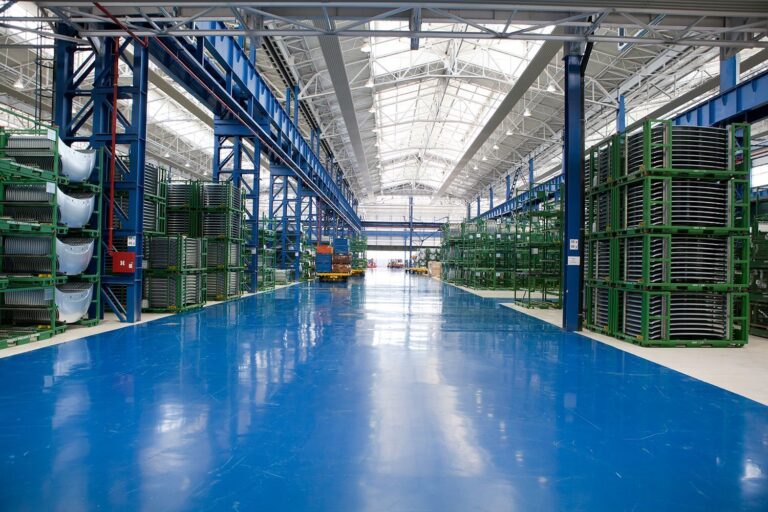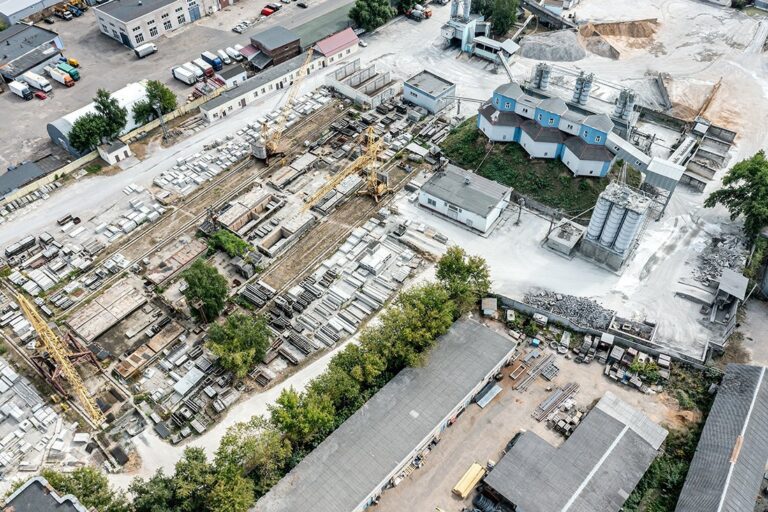
Manufacturing WIP streamlining is increasingly crucial in 2024 to minimize waste and boost efficiency. Given the current supply chain challenges, managing manufacturing costs is more critical than ever before, starting from the moment raw materials arrive at your doorstep. Effective process improvements are essential to enhance safety, minimize downtime, waiting, and lost assets. Although not always easy to achieve, these objectives can be realized. In this article, we will explore practical solutions to achieve these goals.
Here are the main topics this guide will address:
- Chapter 1: What is Lean Manufacturing, Lean Waste and WIP?
- Chapter 2: Seven Lean Wastes and How to Reduce or Eliminate Them.
- Chapter 3: What is RTLS and how it can help?
- Chapter 4: Case Study: WIP Tracking in Linear Processes
- Chapter 5: Case Study: WIP in Nonlinear Processes or Cell Manufacturing
- Chapter 6: Case Study: WIP in Quality Control and Refurbishing
- Chapter 7: WIP in Maintenance and Repair
Chapter 1: What is Lean Manufacturing, Lean Waste and WIP?
Before we dive deeper, it’s worth clarifying the definitions of WIP, Lean Manufacturing and Lean Waste, and how these fit together.
Lean Manufacturing
Lean manufacturing has been around a long time. The term “lean” was coined to describe the Toyota Production System (TPS) during the late 1980s by a research team headed by Jim Womack, Ph.D., at MIT’s International Motor Vehicle Program. There are many terms associated with lean manufacturing. The main goal in lean manufacturing, simply put, is to eliminate waste. TPS was developed to create a lean manufacturing framework, which was based on the idea of preserving (or increasing) value with less work. Anything that does not increase value in the eye of the customer must be considered waste, or “Muda.” Six Sigma, a method that provides organizations tools to improve the capability of their business processes, also derived their program from the TPS. This increase in performance and decrease in process variation helps lead to defect reduction and improvement in profits, employee morale, and quality of products or services.
Lean Waste
The original seven wastes (Muda) were developed by Taiichi Ohno, the Chief Engineer at Toyota, as part of the Toyota Production System (TPS). The seven wastes are Transportation, Inventory, Motion, Waiting, Overproduction, Overprocessing and Defects. They are often referred to by the acronym ‘TIMWOOD’. The 8th waste of non-utilized talent or ‘Skills’ of workers was later introduced in the 1990s when the Toyota Production System was adopted in the Western world. As a result, the 8 wastes are commonly referred to as ‘TIMWOODS’.
WIP
In manufacturing, WIP usually refers to “inventory that has entered the manufacturing process but is not yet a finished product. This could describe units being assembled, components being lathed, biologics being prepared, textiles being treated, or many other processes.
Chapter 2: Seven Lean Wastes and How to Reduce or Eliminate Them
Here we will discuss the original lean wastes in manufacturing WIP, and how to reduce or eliminate them, to help you become a leaner manufacturer and increase your bottom line. The seven areas of waste are: Transportation, Inventory, Motion, Waiting, Overproduction, Overprocessing, and Defects.
Transportation is the transport of goods around, and in and out of the manufacturing facility. Inventory refers to excess or lost inventory. Motion is any unnecessary movement, which could include searching for parts that are out of place or lost. Waiting is where a worker loses valuable time waiting for various reasons, such as for parts to arrive. Overproduction is producing more goods than needed and having to waste valuable space storing, managing and tracking them. Overprocessing is the unnecessary production of a good, above and beyond what is needed, such as an overabundance of product or features than the customer needs. Defects can cause all kinds of downstream problems, such as repair, replacement, and customer dissatisfaction. It’s worth noting that all seven of these lean wastes overlap and are interrelated.
Let’s discuss a little about each of these lean wastes, how they affect your manufacturing process, and what you can do to improve or eliminate them.
Transportation
Any manufacturing process can be complex, disorganized, and dangerous and can lead to unnecessary and costly wastes. When products move through the manufacturing facility a poorly designed workflow can create gaps between work and production stations, causing workers and products to travel unnecessarily, losing time, and causing traffic and crowding safety issues. It also creates the potential for theft, misplaced or damaged goods and is especially wasteful when workers cover the same ground repeatedly. Creating an efficient workflow is critical to a smooth and lean manufacturing process.
The workflow encompasses many things, from workstations to the parts moving through the workflow, to workers interacting with the parts, processes, and other workers as necessary. So, what do you do, if restructuring the physical workflow is not possible? For instance, what if your manufacturing process was put in place many years ago with heavy and expensive equipment that can’t be moved, to create a more efficient workflow? Is there a way to a smooth workflow, and thereby WIP, without physically moving equipment or workstations? The short answer is yes.
Today, it’s not necessary to physically move your manufacturing equipment in order to achieve an efficient workflow. Instead, a virtual solution can be implemented that will help you keep track of all your assets as they move through your manufacturing process, creating a more efficient WIP workflow. We’ll get to that after we discuss the rest of the lean manufacturing wastes.
Inventory
Excess inventory is costly in almost every way, from needed manpower to manage it, to handling, storing, and tracking. There is also the added cost to insure it, and the very real possibility of damage, deterioration, theft, and obsolescence. There are many reasons that companies end-up with excess inventory: overproduction due to lost or misplaced inventory, inefficient workflow processes, manual processes to track inventory (which often lead to errors) or simply to have peace of mind knowing you always have enough inventory on hand – just in case.
The more control you have over your inventory, the more you will control your entire process.
Motion
As mentioned above, unnecessary motion has the same wastefulness as transportation. It wastes time, and creates safety issues. When workers spend time searching or retrieving items required for their job, they are not operating at peak performance. If workers need to spend time searching for parts or tools due to a disorganized workflow, or if they are missing, in need of repair, or need assembly before use, you’re creating unnecessary movement for your workers, costing them time, and you money.
Furthermore, excess motion increases the risk of worker injury, increases wear and tear on tools and equipment, increases the potential for product loss or damage, and increases congestion in work areas, all while adding absolutely no value to your product or process. That means you’re literally going out of your way to decrease productivity potential.
Waiting
A few common reasons for delays in a manufacturing WIP are waiting for products to finish a previous step, waiting for materials to arrive from another location, or for lost items to be found. Small delays, and products waiting in queues, can cascade into massive delays with unintended consequences, for example when materials have a shelf life or expiration date.
Overproduction
When products are produced sooner than needed or in higher quantities than required, additional resources are required, such as labor and increased space and inventory management, as each new resource increases costs. If you produce too much of a perishable product, it might end-up being thrown away. Sometimes overproduction occurs when products can’t be located, and a new batch is started, only to find the missing product(s) later.
Overprocessing
When an item in the manufacturing process is not fully evaluated, for example when an item requires testing for safety or reliability during manufacturing, it can be overprocessed by redoing the same test unnecessarily or sending the product back for rework because a test was misinterpreted. This can also happen when a change in shift creates a duplication of efforts, where the step in the process was not realized by the incoming worker. Having real-time data may prevent these situations.
Defects
Similarly, when steps in a manufacturing process, such as testing, are skipped due to lack of tracking, there are bound to be all types of mishaps including defects. This can occur due to a variety of reasons, including shift changes, or an influx of new hires. But also, if an item is missing in inventory, then found, how do you know whether it was tested and approved to go on to the next step?
For further reading on lean manufacturing, read Iram Chaves’ article, The Power of Lean Manufacturing.
How can we improve or eliminate these wastes in our manufacturing work in progress? With Real Time Location Systems (RTLS).
Chapter 3: What is RTLS and How it Can Help?
RTLS refers to technologies used to locate objects’ actual whereabouts in real time. So, while RFID or a barcode identifies an object (if you can find it to scan in the first place), RTLS gives you the current location of the object. RTLS often incorporates other data like object identification, storage parameters, expiration dates, etc., It can tell you precisely where a scan occurred for example, some RTLS technologies can be paired directly with identification-only systems, like barcodes and RFID. Knowing where things are at any given moment can be immensely powerful for making sense of WIP.
Almost by definition, WIP involves multiple moving pieces. The scope of this juggling act can pose many challenges for manufacturers, such as forecasting product completion, maintaining the right balance between enough and too much inventory, and identifying sources of inventory loss or damage, as we discussed in Chapter 2: Lean Wastes.
Manufacturers of all sorts have implemented various tools for WIP, asset tracking, and related process improvements. These range from clipboards to spreadsheets and dedicated WIP software and hardware solutions. The purpose of these WIP tracking measures is typically to deliver the following benefits:
- Cutting down the time spent on reporting
- Keeping a better pulse on product quality parameters
- Gathering fresh data on production cycles and schedules
- Identifying bottlenecks and choke points
- Auto-tracking inventory
- Preventing unplanned downtime
- Clarifying opportunities for improvement
- Increasing productivity—and revenue—overall
In addition to all the above, WISER’s RTLS uses ultra wideband (UWB) technology in its patented Redundant Real Time Location System (RRTL). This is what make’s WISER’s technology so precise.
What is UWB? UWB is a radio technology, somewhat similar to Bluetooth and WiFi at its core. Like other radio technologies, its primary use today involves transferring data for various types of communication. However, UWB’s unique characteristics enable extremely precise location and distance measurements. Where previous generations of wireless technology enabled location accuracy within several meters or feet, UWB has repeatedly delivered location accuracy within inches.
If the focus on location data makes this sounds like GPS, it’s worth noting that UWB is an inherently short-range technology. Shorter ranges and emission requirements also keep it much lower in power consumption and more difficult to intercept. Since it combines lower power outputs, shorter ranges, and more accurate localization, UWB is an ideal wireless technology for precise location-based services.
As with other industries, one of RTLS’s key benefits in manufacturing is that RTLS can supplement or even eliminate many manual, error prone processes. Take scanning, for instance. Some factories install stationary automatic scanning stations or portals for every key step of their manufacturing journey, so that batches or individual components have a clear marker of progress and compliance at each juncture. However, the limitations of scanning technologies, plus the costly physical requirements of many manufacturing processes, make automatic scanning challenging and often impossible.
Many manufacturers compensate for this by implementing manual scanning and data-entry processes to track WIP. These processes are hugely prone to human error.
Below are some resources on RTLS and UWB technologies.
For more information on UWB you can read our article: A Newcomer’s Guide to Ultra Wideband (UWB) Technology.
It also might be worth visiting the UWB Alliance, whose mission is to advocate UWB technology and use cases, to:
- Promote verticals showing the value of UWB for IoT and Industry 4.0.
- Build a global ecosystem across the complete UWB value chain, from the silicon to the service.
For more information on RTLS, see our comprehensive guide: Everything You Need to Know About Real-Time Location Systems (RTLS) in 2024
With that groundwork, here are some specific areas where WIP + RTLS can really make an impact.
Chapter 4: CASE Study: WIP Tracking in Linear Processes with RTLS

There are plenty of ways to track progress when your work process is formulaic, predictably sequential, and linear. For instance, it’s common to have paperwork orders moving through a physical process in tandem with production, or to scan components at each station if the manufacturing process allows barcodes or RFID to mark the unfinished product. Both, however, require some manual effort, where there’s also a risk of human error or negligence.
One simple way RTLS can address this is by delineating spatial zones for each workstation. Zone-based tracking allows a plant manager to immediately see how many pieces (tags that are affixed to each asset needing to be tracked) are in each zone, how many items have been there, how long they stay in each zone, and where bottlenecks are occurring—all without scanning an item or updating a spreadsheet.
For instance, one example is where an action is executed based on zone movement. When an RTLS tag enters or leaves a zone, the movement triggers the system to move to the next stage (zone) in the process for uninterrupted production.
Having trusted location data doesn’t solve every problem, but it does help plant managers know where to look first when there’s an issue. Integrating current, location-based updates with a manufacturing execution system (MES) also automates updates for processes that need to be reported.
Chapter 5: Case study: WIP for Nonlinear Processes or Cell Manufacturing

This is where RTLS really shines due to the simple fact that cell manufacturing processes are even harder to monitor than linear processes. Thus, the returns stand to be even higher for work that doesn’t necessarily follow a set sequence of steps, locations, or events.
This method of manufacturing can be even more complicated if the facility is a Job Shop. These manufacturers often process smaller volumes of goods, with each process order being uniquely different from the next. They may produce custom or semi-custom products or alternatively finish/paint or repair products owned by their customer rather than themselves. Their customers often demand quick turnaround and accurate job quoting, so meeting customer requirements is paramount. To accommodate the unique needs of different orders, job shops often utilize small lot manufacturing where each job is processed through multiple stations in various orders. Sometimes they skip stations or even repeat stations. Because this manufacturing process is so flexible, it is the most complex to manage and any inefficiencies can yield huge increases of waste in Time, Motion, and Waiting.
Take for example a manufacturer who machines customized metal parts. In a day, the manufacturer may receive hundreds of orders for metal plates, specialized springs, bolts or screws, and other customized parts in varying amounts.
Perhaps order B is a group of screws that need to be cold forged, heat-treated and some will require zinc-plating at the end. They must complete Stations 1, 3, and 5 before inspection and shipping.
The order easily passes through Station 1, but the worker at station 3 is busy with another order and puts Order B to the side. Things must wait which is common on a flexible job shop floor. A problem arises if Order B gets in the way of someone else working on Order C. Order B gets moved. After a few more rounds of waiting, Order B can get shuffled far from station 3 and eventually lost. The highly skilled worker at Station 3 now needs to leave her station to search for Order B which was skipped. This now delays work on all the following orders at Station 3. Searching for Order B wastes motion for that worker and causes unnecessary waiting.
No barcoding or RFID will find a lost or misplaced item, and sequential station checks are a time-consuming process without location information. RTLS solutions, however, (the WISER Locator, for example) will tag Order B’s container so it can be tracked in real time. The worker can then simply look up the location of that order on an app and find it in minimal time.
With RTLS, Order B is found quickly, and the worker completes it at Station 3 before moving it on to Station 5.
In this scenario, Station 5 worker’s machine malfunctions, and she needs to swap out a part located in the repair shed. Station 5’s work is held up causing additional waiting for Order B and the following orders. The operator contacts or visits the repair shed hoping someone can find the part quickly. Even if a database stores information on the spare parts, it cannot give accurate location information. Parts get moved around often in a repair area even with the best organizational practices in place. With RTLS, if the part is tagged, the worker can readily identify an available part and determine its real-time location through a simple look up. If no repaired part is available, the worker and manager can quickly find a suitable alternative whether that’s swapping machines, switching stations, flagging for immediate repair, or informing management of the delay of delivery in a timely manner.
Finally, Order B arrives at inspection and shipping. Everything is ready except for the screws that require zinc-plating. They are on the finishing floor which is in another building and that group is behind. The inspector has no idea when these plated parts will be ready. He must put Order B’s container to the side along with its paperwork and inspect the next order. Order B’s container can easily be shuffled out of place and lost, while taking up valuable storage space in a busy area. With an RTLS solution, the worker can determine where the missing screws are in the finishing process (waiting to be plated, being plated, etc.) and with that information determine whether to store B’s container close by or in a longer-term storage area farther way. This reduces time wasted in transporting Order B to the wrong storage area. When the plated screws arrive, she can use RTLS to easily find Order B’s location – even if someone else in shipping inadvertently moved it – and prepare the completed order for shipment.
In this scenario, the RTLS has: 1. ensured the plant does not lose orders; 2. minimized waiting time and motion looking for parts of orders, tools, or parts under repair; and, 3. given workers and managers timely information about the status and location of orders to enable better, more efficient decision making. As an added benefit, managers can utilize historical information from the RTLS to gain information about the general workflow of different types of orders to better assign stations, machines, and personnel appropriately, and to reduce wasted transportation as well. With this information they can more accurately quote orders and better control their cash flow.
Chapter 6: WIP in Quality Control and Refurbishing
In certain industries, a product must go through intensive screening while on the manufacturing line to ensure its safe and reliable use in a variety of conditions. The most common production-line testing for electronics is Environmental Stress Screening (ESS) which aims to identify imperfections in a unit that might cause it to fail early in its life cycle. The subcomponents and the completed product may be tested at specific points throughout the manufacturing process through thermal (very hot or cold), vibration, humidity, lightning, mechanical stress, and other tests. In each test, the component or product is placed in a stress environment and tested for a pre-specified timeframe. The test will be designed to look for flaws without damaging the component or product. If the unit fails before the allotted time, it will need to be repaired and retested, or removed from the production line.
For certain products, such as airplane engines or space technology, 100% of produced units will likely go through ESS testing. For some industries with high safety and reliability requirements but very mature design and production methods, the company may choose ESS sampling instead. Both require careful coordination by the plant manager and manufacturing team.
Take for example an avionics manufacturer who is assembling sensor arrays for airplanes. These may track weather, obstacles, altitude, and other data and feed that information to a dashboard. For the safe operation of the aircraft, the sensors must be both accurate and reliable and the transfer of that information to the pilot through the dashboard must be just as accurate and reliable.
For assembling this array, the facility will have several stations each manned by skilled worker(s) who will add new components to the full sensor array and attached dashboard. For the most part, all sensor arrays will go through the same stations in the same order. At precise points in the assembly process, the array will be transferred to specific testing chambers for ESS tests. To produce this particular sensor array, perhaps there will be 5 points for ESS testing. At each of these points, the array will travel to one or more testing chambers for different tests. If the array fails a test, it will return to the last station where a component was added and the worker will troubleshoot the problem, fix it, and return it to the chamber for retesting. If the array fails too many times, it may be removed from the production line for further analysis or disassembly. The facility may use RFID or barcoding to scan for the status of where the sensor array is in process. However, having a full RTLS like the WISER Locator, which collects real-time information about time and location, can significantly decrease production-line waste in waiting, motion, transport and overprocessing and reduce product defects.
In this first simple scenario, where there are no defects identified, barcode scanning or RFID may be sufficient.
A worker at Station 3 adds a critical component to Array1. Once complete, she transfers it to Testing Chamber A where it waits for testing. After it’s tested for 20 minutes (amount of time required to pass), it moves to Station 4. Barcode scanning or RFID systems can handle this scenario easily by noting the Array passed through the prescribed steps associated with a corresponding scan. But as more variation is added, for example when Arrays fail tests at different points, the value of RTLS increases.

In the second scenario where an array fails, barcoding will be insufficient and RTLS is the only solution to ensure accuracy in the process.
The worker at Station 3 finished Array 2 and sent it on to be tested at Chamber A, where it fails and returns to Station 3 for analysis. While the barcode or RFID system can let the worker at station 3 know that it was at the testing chamber, it cannot tell them it was in the chamber long enough to pass or fail. With RTLS in place, anyone can check to see how long Array 2 was inside the testing chamber and see that the time was too short for it to have passed. It’s instead determined the component needs repair and will need to wait, adding the potential for getting lost.
In the third scenario, where RTLS provides significant ROI, a product can be lost or delayed because of a lack of information:
The worker at Station 3 sent Array 3 to Chamber A for the first time. She never gets it back, so assumes it passed the required test. In reality, the worker at Chamber A is backed up and forgot about Array 3. With barcode scanning or RFID, although each step may be recorded when someone scans it, it’s subject to missed scans/human failure. It is also difficult to see what happens between steps. With RTLS, the worker at Station 3 or a manager can easily check whether that array has been inside the chamber and flag it if it has been waiting too long.
Scenario four is at the end of the day:
Array 4 is tested 3 times and fails each time, taking it out of production for repair or scrap. A new worker takes over Chamber A and would not be able to see the true history with barcode scanning or RFID.
With RTLS, this new worker can see Array 4’s history and understand where it went between repair stations and the testing chamber and how much time it spent at each. She can quickly decide to move it out of the production line even if she hasn’t seen this Array throughout the day. This saves the worker time from accessing a database for a detailed review of a live stream of complex data.
One can clearly understand how RTLS offers large benefits in reducing lean waste for products with significant testing requirements. In this case, RTLS has: 1. ensured that sensitive equipment undergoes all tests correctly; 2. minimized waiting time and motion in a complex process where tests may take different amounts of time and units may sometimes repeat a station; and 3. given workers and managers timely information about the status and location of units to enable more efficient decision making.
An RTLS System can also prevent overproduction caused by re-testing products unnecessarily. For complex products where safety is paramount, this knowledge enhances confidence in the safety of the product while also improving efficiencies and cash flow.

See Testing During Product Development and Manufacturing for a deeper understanding of ESS.
For additional reading on similar applications see our case study: Work Order Tracking in GE Aviation’s Maintenance, Repair and Overhaul (MRO) Facility
Chapter 7: WIP in Maintenance and Repair

For expensive equipment, such as airplane engines and medical equipment, Maintenance and Repair can become a highly complex, variable process with narrow specifications. In most cases, the machine being repaired is owned by the customer, not the repair shop, so the replacement of any parts lost or accidentally broken can significantly raise costs. Sometimes component or system ESS testing will also be required adding further complexity to the repair process. Because of the unique requirements for each job order and the variation of how each job passes through the repair line, a full RTLS like the WISER Locator can significantly reduce unwanted waiting, motion, and transportation throughout the repair process.
Take for example a facility that maintains and repairs airplane engines. Similar to the Job Shop floor example above, the engine repair shop includes several stations manned by highly skilled workers who complete different cleaning, checking, and repair steps. Which stations the engine needs to pass through will depend on what needs to be repaired. The time spent at each station will vary given how serious the problem is. As above, RTLS can prevent unwanted waiting and motion by allowing workers and managers to always see where each part is in real time.
An additional challenge with repairing a large, complex engine is that the first step involves disassembling the engine so multiple stations can work on it simultaneously. At the final step, all the parts must come together concurrently to ensure the entire engine is reassembled and no parts are used from another engine. With RTLS in place, the workers and managers can make sure all the parts being cleaned and repaired are moving through the stations as expected. If one gets stuck at a station due to an extra-long repair or another problem, the manager can reassign resources to get that part ready in time for assembly or push that engine further back in line so all the parts will be ready at the reassembly step.
RTLS also makes it much easier for the workers at the reassembly station to quickly identify the location of late or missing pieces so they can minimize waiting time or unnecessary searching. Finally, RTLS will offer a history of where all parts traveled through the shop floor to reassure a customer that all appropriate parts have been assembled in the final repaired piece.
Because of the unique challenges involved with repair shops, RTLS reduces unwanted waiting, motion, and defects, unnecessary transport, over production and over processing and helps users manage the complexity of their business. This translates into higher efficiencies, better quality control, and reductions in operating expenses.
Related reading: 15 Ways RTLS Disrupts Manufacturing.
Bonus: Podcasts about UWB RTLS
● Tracking Without Prejudice: IIoT on the Shop Floor (Tech Means Business)
● UWB RTLS with WISER Systems (WiFi Ninjas)
● Lower Cost UWB Arrives (Mr. Beacon Podcast)



